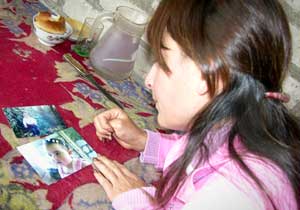Pneumonia: the world knows what to do
Pneumonia is now recognised as the leading killer of children globally. Almost one in twenty child deaths (4%) occur because of pneumonia within the first 28 days of life. After this, around one in seven (14%) under-five deaths are pneumonia related. Together, this equates to over 1.3 million children each year, or nearly one in five child deaths.
Pneumonia in low and middle income nations appears least in the central and south American regions, and most in South Asia and Africa, where many nations are recording post-natal pneumonia rates at 20% or higher. At the other end of the scale, the rates of pneumonia among children in developed nations are relatively low, and deaths from pneumonia fewer than from accidents or injury. The world knows how to avoid pneumonia, and strategies to apply this knowledge in all contexts are urgently needed.
Creating resilience to childhood pneumonia will also reduce many other illnesses including diarrhoea, cholera and meningitis. Children who are breastfed, and continue a diet with appropriate micronutrients, are off to a good start. The right schedule of vaccinations – DTP, HIB, PCV and rotavirus – create immunity to a subset of conditions that cause pneumonia and diarrhoea. Environmentally, if children can avoid exposure to or ingestion of dirty water, particularly water contaminated with animal or human faeces, and if the household handwashes with soap and cooks with good ventilation using low-carbon fuel alternatives, many of the causes of children’s illness will be greatly reduced. Lastly, access to healthcare and advice as well as a culture of seeking treatment for children’s symptoms – coughs, fevers, lethargy or fast breathing – allow interventions before these symptoms cause pneumonia to set in.
According to UNICEF, these elements for protecting children’s health are often included within national government health policy, but lose traction as they shift towards local level realities. The burden of pneumonia is greatest in countries with weak child health systems because of gaps in policy, in implementation or in equitable distribution of health services. Countries facing a high rate of pneumonia fatalities include India (407,000 deaths each year), Afghanistan (47,750), DRC (88,000), Ethiopia (57,000), Mali (24,000) and Somalia (17,500). All face significantly different challenges in staffing, resourcing and maintaining health services at community level, despite the commitments of governments, multilateral donors and the private sector to reach every child.
Solution: community case management
World Vision’s response to pneumonia is often housed within programmes or projects for integrated community health, or Community Case Management (CCM). CCM is about treatment and prevention of diseases at family level through community health workers. World Vision uses this model in partnership with local and national authorities, usually in geographic regions where full coverage healthcare is a challenge for governments to provide. In these regions it is often the case that symptoms go unrecognized or treatment is not sought because of limited access to medical expertise. CCM focuses knowledge on children’s health issues within the community itself, so that both prevention and treatment of common childhood illnesses can be localized and timely. Knowledge and services are strengthened to address a variety of challenges, including pneumonia, diarrhoea, malaria and malnutrition, through an integrated introduction of new practices and shared experiences. Positioning existing community members and not outsiders as the source of this knowledge leads to trust and open dialogue on the issues faced.
A common objective for World Vision’s local advocacy is to encourage government take-up of similar low-cost, locally viable projects to support community case management. The strategy works alongside, rather than replacing, the need for more access to formal health services, doctors and drug supplies. However, community case management is proven to be extremely effective in reducing the causes as well as the effects of pneumonia and diarrhoea in children, and therefore the rate of referrals to hospitals.
World Vision’s CCM partnerships are active in many countries including Ghana, Ethiopia, Uganda, Kenya, Niger, Pakistan, Indonesia, Southern Sudan and Rwanda.
A mother looks at the photo of her three year old daughter, who she lost to pneumonia.
*All statistics are from UNICEF’s 2012 report “Pneumonia and Diarrhoea: Tackling the Deadliest Diseases for the World’s Poorest Children [PDF]”. Unless otherwise stated, they combine figures for neo-natal and post-natal pneumonia fatalities.
